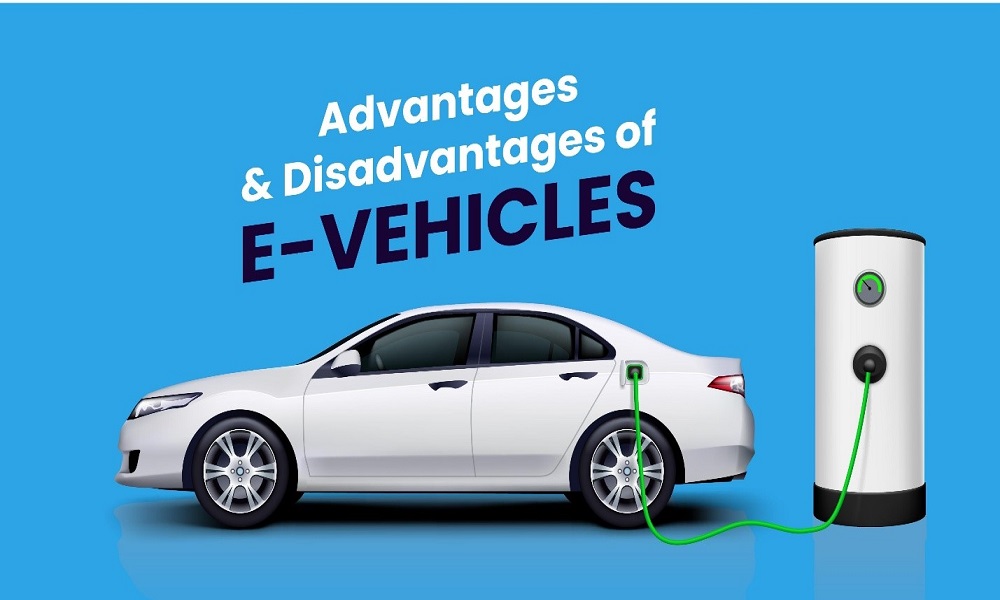Advantages and Disadvantages of Electric Cars
Electric cars have been around a lot longer than today’s Tesla or even the General Motors EV1 of the late 1990s. In fact, electric cars appeared long before the internal-combustion sort, and dreamers have never stopped trying to make them work both on the road and as a business proposition. A lack of historical perspective sometimes leads to misunderstandings of how things came to be as they are now, so let’s take the long view of the road that got us here.
We start in the 1830s, with Scotland’s Robert Anderson, whose motorized carriage was built sometime between 1832 and ’39. Batteries (galvanic cells) were not yet rechargeable, so it was more parlor trick (“Look! No horse nor ox, yet it moves!”) than a transportation device. Another Scot, Robert Davidson of Aberdeen, built a prototype electric locomotive in 1837. A bigger, better version, demonstrated in 1841, could go 1.5 miles at 4 mph towing six tons. Then it needed new batteries. This impressive performance so alarmed railway workers (who saw it as a threat to their jobs tending steam engines) that they destroyed Davidson’s devil machine, which he’d named Galvani.
Batteries that could be recharged came along in 1859, making the electric-car idea more viable. Around 1884, inventor Thomas Parker helped deploy electric-powered trams and built prototype electric cars in England. By 1890, a Scotland-born chemist living in Des Moines, Iowa, William Morrison, applied for a patent on the electric carriage he’d built perhaps as early as 1887. It appeared in a city parade in 1888, according to the Des Moines Register. With front-wheel drive, 4 horsepower, and a reported top speed of 20 mph, it had 24 battery cells that needed recharging every 50 miles. Morrison’s self-propelled carriage was a sensation at the 1893 Chicago World’s Fair, also known as the famed World’s Columbian Exhibition. Morrison himself was more interested in the batteries than in mobility, but he’d sparked the imagination of other inventors.
Crude electric carriages were invented in the late 1820s and 1830s. Practical, commercially available electric vehicles appeared during the 1890s. An electric vehicle held the vehicular land speed record until around 1900. In the early 20th century, the high cost, low top speed, and short range of battery electric vehicles, compared to internal combustion engine vehicles, led to a worldwide decline in their use as private motor vehicles. Electric vehicles have continued to be used for loading and freight equipment, and for public transport – especially rail vehicles.
At the beginning of the 21st century, interest in electric and alternative fuel vehicles increased due to growing concern over the problems associated with hydrocarbon-fueled vehicles, including damage to the environment caused by their emissions; the sustainability of the current hydrocarbon-based transportation infrastructure; and improvements in electric vehicle technology.
ADVANTAGES OF ELECTRIC CARS-
1) Low running cost –
Since you are not paying for petrol or diesel to keep your EV running, you save a lot of money on fuel. The cost to charge an electric vehicle compared to the price of petrol or diesel is substantially low. You can reduce the electricity cost further by utilizing renewable energy sources such as solar.
2) Low maintenance cost-
Petrol or diesel-powered vehicles require regular maintenance since they have multiple moving parts. That’s not the case with electric vehicles since they have comparatively lesser moving parts. This means that your electric car is likely to have lower maintenance costs in the long run.
3) Tax and financial budget –
With India embracing the inclusion of EVs, the government offers several policies and incentives to encourage the usage of such vehicles. For instance, the registration fees and road tax on purchasing EVs are lesser than ICE vehicles.
4) Better performance –
In the past, EVs were seen as impractical. However, that has changed over the years, with manufacturers offering well-designed and good-looking EVs. Even the performance of EVs has changed for the better. Electric Vehicles are lighter in weight, and their acceleration is impeccable compared to fuel-powered vehicles.
5) Easy to drive and quiet –
With lesser moving parts and uncomplicated controls, EVs are easy to drive. Also, you can plug such a vehicle into a public or home charging station when you want to charge it. They are also quiet, thereby reducing the sound levels that fuel-powered vehicles generate.
6) No fuel emissions –
One of the most significant advantages of EVs is their impact on our environment. Pure EVs have zero tailpipe emissions, which reduces air pollution. Since the electric motor of the EV operates on a closed circuit, it does not emit any harmful gases. Pure electric cars do not require petrol or diesel, which is excellent for the environment.
7) More storage –
With less moving parts, electric vehicles offer the opportunity to convert these spaces into storage and offer larger cabin room. You can also find storage spaces under the hood since the conventional ICE is no more there. EV motors and batteries do not take a lot of space compared to fuel-powered vehicles.
DISADVANTAGES OF ELECTRIC CARS
1) Limited driving range-
Although battery technology is continuously advancing, electric vehicles tend to have a shorter driving range compared to their traditional counterparts. This can cause range anxiety for some drivers, especially on long trips or in areas where charging stations are sparse.
2) Charging infrastructure –
The availability of charging stations can be limited, particularly in rural or remote regions. While the number of charging stations is steadily growing, it is yet to match the convenience and widespread availability of gas stations. Additionally, charging an EV typically takes longer than refueling a fossil fuel vehicle, which may be inconvenient for some drivers.
3) Battery life and degradation –
Over time, electric vehicle batteries can experience capacity degradation, which may lead to reduced driving range and performance. Battery replacements can be expensive, although it’s expected that costs will decrease as technology continues to improve and economies of scale take effect.
4) Environmental impact because of battery production –
The production process for electric vehicle batteries can have negative environmental consequences, including habitat destruction, water pollution, and greenhouse gas emissions. However, efforts are being made to minimize these impacts through responsible sourcing of materials, recycling initiatives, and advancements in battery production technologies.
5) Long charging time –
Filling up your petrol or diesel car can take just 5 minutes. Charging your EV can take anything from 30 minutes to an hour using the latest public rapid chargers. You may be twiddling your thumbs for an entire day if you are using a standard domestic socket. This can seem like an instant deal-breaker, until you dig a little deeper.
6) Low top speed –
Electric cars are quick, there is no lag or delay in the power delivery either, so it all feels absolutely effortless. But, unless you are looking at the top end of the EV market, most family-friendly SUVs and hatchbacks are limited to relatively low top speeds. Some can barely hit 90mph where even a base-spec petrol car will do well over 100mph.
CONCLUSION –
Electric vehicles present a promising alternative to conventional gas-powered vehicles, with numerous benefits that can contribute to a more sustainable transportation future. Nonetheless, it’s essential to recognize and tackle potential issues and limitations as technology and infrastructure advance. By understanding the full range of the advantages and disadvantages of electric vehicles, buyers can decide if an electric vehicle suits their requirements and tastes.




